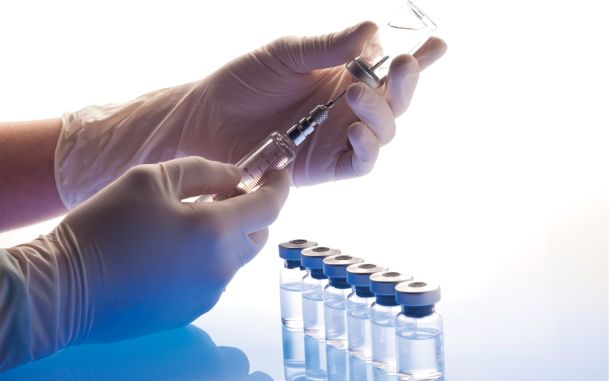
Think of a kitchen. This kitchen has a blender for blending, an oven for cooking, a fridge for cooling, utensils for eating, a dishwasher for cleaning, pans for frying, jars for storing, peelers for peeling, etc. It has a full line of tools, gadgets, and appliances for the sole purpose of helping us prepare a meal. However, they are all separate appliances that altogether fill up an entire room. The fridge is not connected with the oven, nor do the forks have anything to do with the blender. Now, think of such a kitchen in which all of these gadgets and appliances work together in perfect harmony. The fridge cools some strawberries and passes them to the blender, which blends them into a tasty juice. The blender then pours this juice into a glass and serves it to you. After you are done drinking, the dishwasher kindly asks for your glass and washes it before putting it back into your cupboard. Oh, by the way, this kitchen fits snugly into your backpack so you can have juice on the go. This sounds a bit too good to be true, doesn’t it? How could every appliance be in perfect sync with all the others? How would it keep itself clean? How could all of this equipment be so compact? There would be so many complications and barriers to building such a system.
Now, what if I told you that such a system has already been built? And it’s not just a kitchen; it’s an entire palace. Our body is a marvelous palace with millions of functions and features. Such a purposeful design must have certain principles, some of which are efficiency, cleanliness, ease-of-use, and unity. Everything within our body is interconnected and works in total sync. Each organ plays its own crucial part and together they perform amazing feats. In this article, I will try to write about one player on this team: our lungs.
Our lungs serve a very important purpose: to provide the energy our body needs. Our body is in a constant state of activity. Even when we sleep, our heart pumps, our kidneys filter, our liver detoxifies, and our brain computes. No organ really ever shuts off. Maintaining such a machine is no easy task and it requires a constant source of energy. Each cell has its own generator and is more than capable of producing its own energy. However, a few things are needed to keep these generators running, one of which is oxygen. Every cell in the body needs to be constantly served oxygen as their operations begin to get disrupted only within a few minutes of an oxygen shortage. We know that our blood is full of this miracle gas, but how does it get there in the first place? We all know that it gets there through our lungs, however it is not that simple! The air that reaches our lungs cannot be too much or too little, too hot or too cold, or too dry or too wet. It has to be just right! There are impeccable mechanisms in play to perfect the conditions for each and every breath. Now, take a deep breath and keep reading!
Let us begin with how we bring air into our bodies in the first place. When we take a deep breath we actually control our diaphragm, not our lungs. The diaphragm is a membrane-like muscle that separates our abdomen from our chest cavity. It is the muscle that we move downwards when we initiate a breath. The bases of our lungs are stuck onto our diaphragm; so when we move our diaphragm downwards our lungs are also pulled down and increase in volume. This sudden increase in volume generates a negative pressure inside of our lungs causing air from the atmosphere to pour in. In addition, our exhalation occurs on its own without using any energy! Our lungs are very elastic, meaning they “want” to return to their original form similar to that of a rubber band that will snap back to its original position after getting stretched. So, after we stop contracting our diaphragm our lungs shrink back to normal and exhale air in the process. Furthermore, since breathing is semi-automatic we contract our diaphragms without even thinking about it. Most of the time, our brainstem takes care of this process without even bothering our brain. Imagine if we had to willfully inhale and exhale every breath; we wouldn’t have much time or concentration to do anything else! As you can see, this life-or-death mechanism is extremely cost-efficient and uses very little energy and little to no brainpower.
Mouth and nose
Moving onward, the beginning of the journey of air, in relation to our bodies, begins with the mouth and nose. Air is dry and its temperature can vary greatly depending on where we live or which season it is. Our body’s core temperature must be kept at a certain level for it to function optimally. Even if we wear the thickest jacket during winter, the air we breathe finds its way into the center of our body. If it weren’t for our nose and mouth this air would quickly dry up and chill our lungs. Tiny blood vessels on the surface of our nasal mucosa provide the majority of the warmth for the air that enters our nose, and the amount of blood flowing through them is regulated based on the heat of the air we breathe: more blood for colder air and less for warmer. These blood vessels also provide the moisture that is picked up by inhaled air before it enters our lungs. In addition, since the air we exhale is already warm and moist part of that moisture condenses back onto the mucosa before leaving our body. Just like a mirror fogs up when we exhale onto it, our nose and mouth are moistened with every exhalation as well. This simple, yet efficient, system is able to warm and moisturize every single breath we take while making sure no drop is wasted!
Cilia
Now, let us venture a bit deeper into our respiratory system. Unfortunately, the air is not sterile and is full of billions of microorganisms floating around. Therefore, we inevitably take in hundreds of thousands of germs with each breath. Lucky for us, but not so lucky for these germs, our respiratory tract is covered with mucus and lined with thousands of “cilia.” Cilia are specialized tentacle-like extensions found on the cells all throughout our respiratory tract. These tentacles constantly grab germs from the air, just like a dust roller grabs dust from a rug. Not only do they grab germs, they push them back outside of our lower respiratory tract. This pushing motion is performed in the form of synchronous waves by all of these tentacles and brings our germ-filled mucus back to our throat. From there, it is typically swallowed into our stomach where the acid melts it away. If we are sick and have an increased load of mucus, emergency measures like coughing or sneezing assist to evacuate the excess. Only certain bacteria that are resistant to being captured by our cilia make it into our lungs and quite a few need to penetrate our defenses to lead to an infection. Our respiratory system greatly exposes itself to the environment by taking in thousands of liters of air every day, and each breath can be considered an attack wave of bacteria and viruses. Yet, it manages to keep itself sparkling clean and ever-vigilant for the next wave.
Lungs
We finally made it to our lungs! Our respiratory tract was able to draw in the dry, cold, germ-infested air from the atmosphere, warm it, humidify it, clean it, and carry it to our lungs. After this long journey (that lasts a few seconds), it is finally time to extract that valuable oxygen! For this extraction to occur air needs to come in contact with blood vessels. The larger the area of this contact is, the better. Our lungs are designed to maximize this contact by distributing the air to a large surface area. When we take a single breath, which is about 3 liters of air, it is distributed to a surface area of nearly 70 m2. This is possible because our trachea (windpipe) branches out many many times to eventually form over 700 million tiny air sacs called alveoli. This masterful dispensation allows us to extract the maximum possible amount of oxygen from each breath and deposit it into our blood. By the way, as if it was known ahead in time that many people would adopt harmful habits like smoking, lungs are made to branch into many more alveoli than we need to live, to prepare for possible damage.
In addition, the amount of air taken in with each breath is also carefully regulated. Our lungs are very flexible and can accommodate twice as much air as the typical three liters we take in with each breath. Our brainstem has a respiratory control center that automatically adjusts the speed and volume of our breathing according to the amount of oxygen we need. Running a marathon? The settings are cranked up to high. Fast asleep? Well, then you don’t need so much, so they are set to low. Our brainstem is tasked to sense our need and nurture us accordingly each and every second, and we do not need to worry about it. Try to imagine if this process was left to our management!
Our lungs also keep a small amount of air that is left inside no matter how hard we try to exhale. This volume of air is called the “residual volume” and it keeps our lungs from collapsing, which would prevent air from entering the lungs. By keeping our lungs even a tiny bit inflated at all times, we drastically reduce the energy required to breathe in. The process is similar to how blowing the first mouthful of air into a balloon tends to be the hardest, and how the continual mouthfuls are easier and easier. Just like a balloon our lungs keep that first mouthful inside at all times so the rest is always easy to fill up. This is why a deflated lung is such a big problem, because it is nearly impossible for a person to re-inflate it by themself. It usually requires assistance from a medical ventilator to get the lung back to normal.
This article only covers a few of the hundreds of mechanisms taking place in our lungs all the time so we can survive. Each of these mechanisms performs many functions, and none of them contradict each other. On the contrary, they all work in perfect unison to provide us with a nice big breath of air. However, there are so many other micro and macro mechanisms at the atomic, cellular, organ, and system levels that constantly carry out millions of functions in our body. They all follow the same principles of efficiency, cleanliness, ease-of-use, unity, and so many more, and all come together as one living, breathing, thinking, and loving human being. Doesn’t that just take your breath away?









